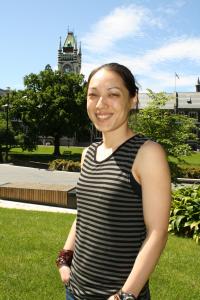Designing better cancer immunotherapy treatments
Dr Sarah Saunderson of the University of Otago aims to modify cancer immunotherapy, a new treatment which uses a person’s own immune system to fight cancer, so that it is effective and safer for a wider range of cancer patients.
Published 8 November 2018

Dr Sarah Saunderson (Photo: provided)
Cancer continues to be the number one killer of New Zealanders. A promising new strategy for treating cancer, called immunotherapy, harnesses the patient’s own immune system to destroy cancer cells. One such groundbreaking therapy genetically engineers the patient’s own immune cells (T cells) to express antibodies that target cancer cells. This process generates a cancer therapy using chimeric antigen receptor T cells (CAR T cells). However, there are still two major problems with this exciting new therapy. Firstly, these therapies have been more effective at treating blood cancers than solid tumours. Secondly, this therapy can trigger an excessive immune response leading to serious, potentially life-threatening, side effects for the patient.
Dr Sarah Saunderson of the University of Otago believes that the key to solving both of these problems is to design the immunotherapy to function specifically within the conditions found inside the solid tumour mass. One key difference between normal tissue and cancer is that solid tumours becomes highly acidic (low pH) due to a build-up of tumour cell waste products. Dr Saunderson has been awarded a Marsden Fund Fast-Start grant to exploit this pH difference to design an antibody “safety switch”. This antibody switch can be incorporated into CAR T cells so they attack cancerous, but not normal, cells. She will first identify antibodies that are naturally pH dependent, then test them to determine if they are safe and effective novel therapies for solid tumours.
This project utilises the differences between solid tumours and normal tissues to develop more effective cancer immunotherapies. The results will also mean patients experience fewer negative side effects from the treatment.
